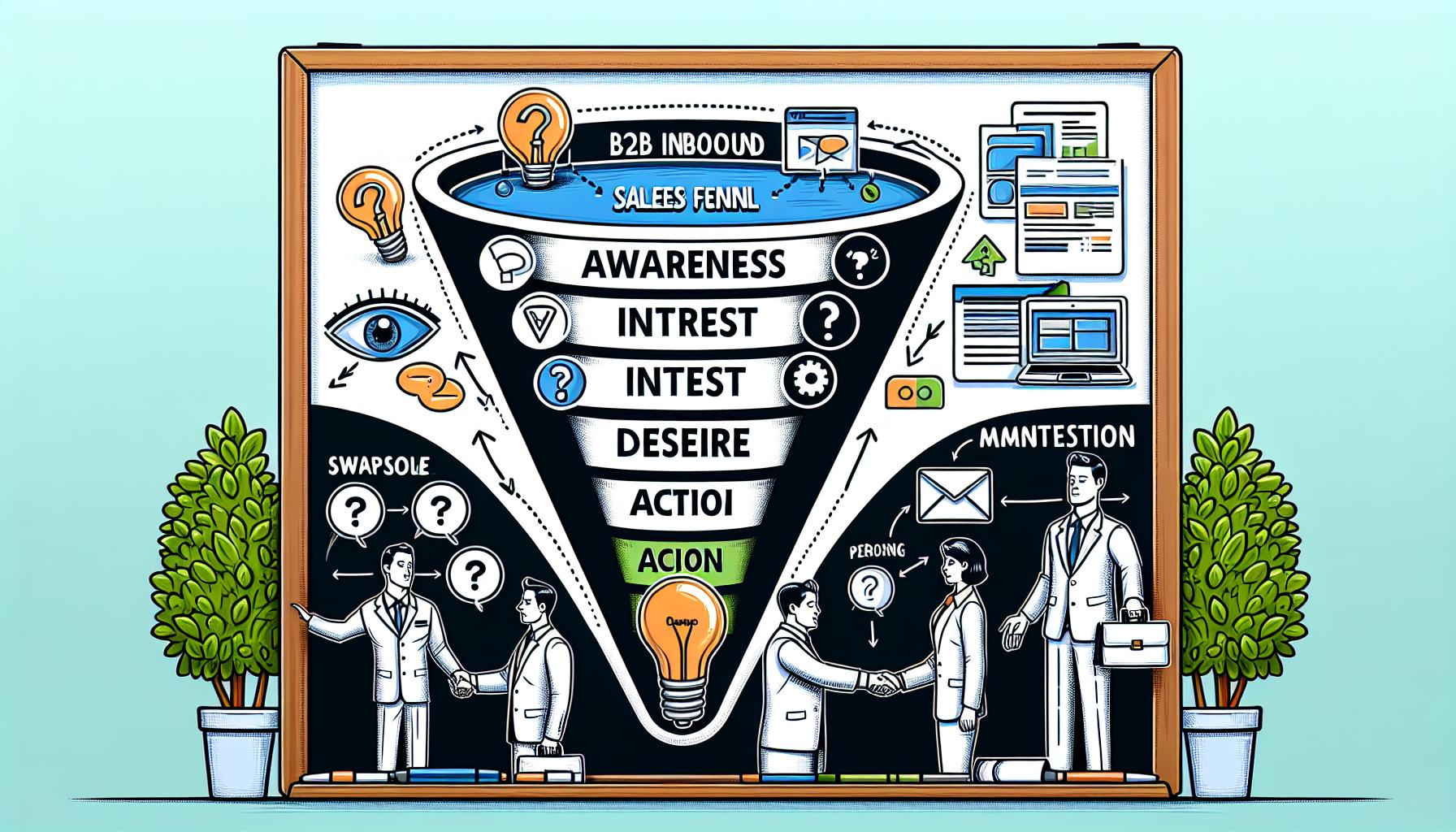In the fast-paced world of B2B marketing, crafting an effective inbound strategy can mean the difference between sinking or swimming in the sea of competition. As a Sales Funnel Builder expert, you understand the importance of attracting, engaging, and delighting your target audience to drive leads and ultimately, sales. In this article, we will explore the ins and outs of B2B inbound marketing and how you can leverage its power to propel your business to new heights. Let’s dive in and uncover the secrets to success in the ever-evolving landscape of B2B marketing.
Table of Contents
- The Importance of B2B Inbound Marketing Strategies
- Key Elements of an Effective B2B Inbound Sales Funnel
- Building Trust and Credibility with B2B Inbound Leads
- Integrating Technology into Your B2B Inbound Strategy
- Best Practices for Nurturing B2B Inbound Leads
- Measuring Success: Metrics to Track in B2B Inbound Marketing
- Concluding Remarks
The Importance of B2B Inbound Marketing Strategies
B2B inbound marketing strategies play a crucial role in attracting and engaging potential clients in the digital age. By focusing on creating valuable content that addresses the needs and challenges of your target audience, you can establish your business as a trustworthy industry authority. This approach helps to build relationships with prospects and guide them through the sales funnel towards conversion.
Implementing effective B2B inbound marketing strategies can result in increased lead generation, higher conversion rates, and improved customer retention. By leveraging tactics such as SEO, content marketing, email nurturing, and social media engagement, you can create a seamless and personalized experience for prospects. This tailored approach not only helps to drive qualified leads but also establishes a strong brand presence in the competitive marketplace.
Key Elements of an Effective B2B Inbound Sales Funnel

When it comes to creating a successful B2B inbound sales funnel, there are several key elements that need to be in place to ensure its effectiveness. Understanding these elements and how they work together is crucial for generating leads and ultimately converting them into customers. Below are some of the key components that make up an effective B2B inbound sales funnel:
-
- Target Audience: Identifying your ideal customer profile and understanding their pain points is essential for creating targeted content that resonates with your audience.
-
- Compelling Content: Creating high-quality, informative content that addresses your target audience’s needs and challenges is crucial for attracting and engaging leads at every stage of the funnel.
-
- Lead Generation: Implementing lead generation tactics such as gated content, email marketing, and social media campaigns can help you capture potential leads and move them through the funnel.
-
- Nurturing Leads: Developing a lead nurturing strategy that involves personalized communication, relevant content, and timely follow-ups can help build trust and move leads closer to making a purchase decision.
Building Trust and Credibility with B2B Inbound Leads
When it comes to building trust and credibility with B2B inbound leads, it’s essential to focus on establishing a strong relationship from the very beginning. One of the best ways to do this is by providing valuable and relevant content that addresses the pain points and challenges that your target audience is facing. By offering helpful resources such as whitepapers, case studies, and blog posts, you can position yourself as a thought leader in your industry and show potential clients that you understand their needs.
Another important aspect of building trust and credibility with B2B inbound leads is ensuring that you deliver on your promises. This means following through on any commitments you make, providing exceptional customer service, and being transparent about your products and services. By consistently demonstrating your reliability and integrity, you can show potential clients that they can trust you to deliver on your word. Additionally, collecting and showcasing testimonials and case studies from satisfied customers can help to further solidify your credibility and establish social proof of your expertise in the eyes of B2B leads.
Integrating Technology into Your B2B Inbound Strategy
When it comes to B2B inbound marketing, integrating technology is essential for staying ahead of the competition. By leveraging the latest tools and software, you can streamline your sales funnel process and attract high-quality leads.
One key technology to consider integrating into your B2B inbound strategy is marketing automation software. This powerful tool can help you automate repetitive tasks, personalize your communication with leads, and track the effectiveness of your marketing campaigns. Additionally, incorporating a customer relationship management (CRM) system can help you manage and nurture your leads more effectively, leading to increased sales and revenue. Overall, embracing technology in your B2B inbound strategy can give you a competitive edge and drive success for your business.
Best Practices for Nurturing B2B Inbound Leads
When it comes to nurturing B2B inbound leads, it’s essential to follow best practices to maximize conversions and build strong relationships with potential customers. Here are some key strategies to help you succeed:
-
- Personalize Your Communication: Tailor your messaging to each lead based on their industry, pain points, and interests. Show that you understand their needs and can provide valuable solutions.
-
- Provide Relevant Content: Offer useful resources such as whitepapers, case studies, and webinars that address common challenges in the B2B space. Position your brand as a trusted authority in the industry.
-
- Engage Through Multiple Channels: Reach out to leads via email, social media, and phone calls to maintain a consistent presence and stay top of mind. Use a mix of communication methods to cater to different preferences.
| Best Practice | Description |
|---|---|
| Segment Your Leads | Divide leads into categories based on demographics, behavior, and engagement level for more targeted nurturing. |
| Follow Up Promptly | Respond to inquiries and requests for information quickly to show leads that you value their time and interest. |
Measuring Success: Metrics to Track in B2B Inbound Marketing
When it comes to B2B inbound marketing, tracking the right metrics is crucial to measuring success and optimizing your strategies for maximum effectiveness. By analyzing key performance indicators, you can gain valuable insights into the performance of your sales funnel and make data-driven decisions to drive better results.
Some of the essential metrics to track in B2B inbound marketing include:
-
- Website Traffic: Monitor the number of visitors to your website to gauge the effectiveness of your inbound marketing efforts.
-
- Lead Conversion Rate: Measure how effectively you are turning leads into customers to understand the efficiency of your sales funnel.
-
- Customer Acquisition Cost (CAC): Calculate the cost of acquiring a new customer to ensure your marketing efforts are cost-effective.
Concluding Remarks
In conclusion, b2b inbound marketing is a powerful tool for driving traffic, generating leads, and increasing sales for your business. By creating a targeted and compelling sales funnel, you can attract and convert potential customers into loyal clients. Embrace the power of b2b inbound marketing and watch your business soar to new heights. Let’s build your sales funnel today and take your business to the next level.

